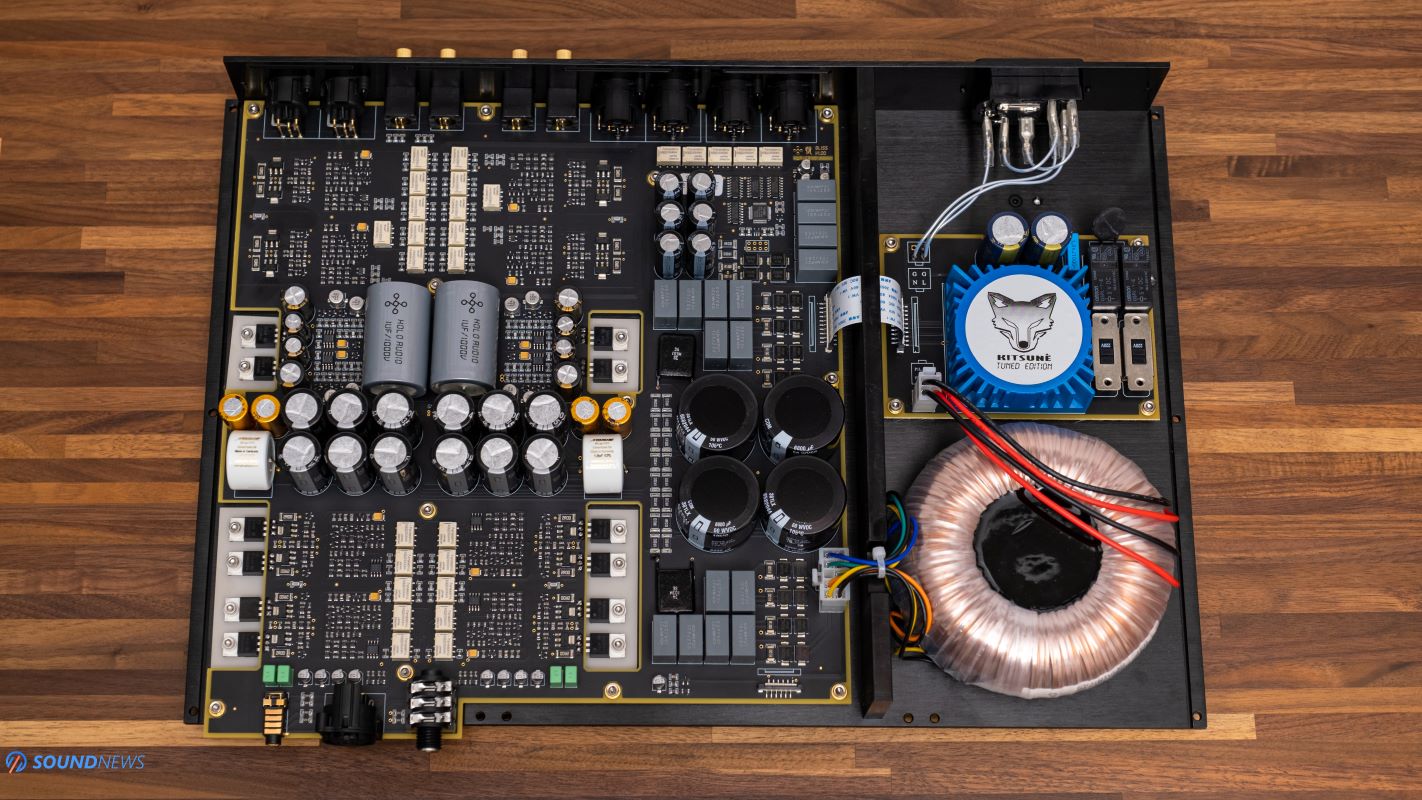A Deep Dive into the Holo Audio Bliss KTE Headphone Amplifier
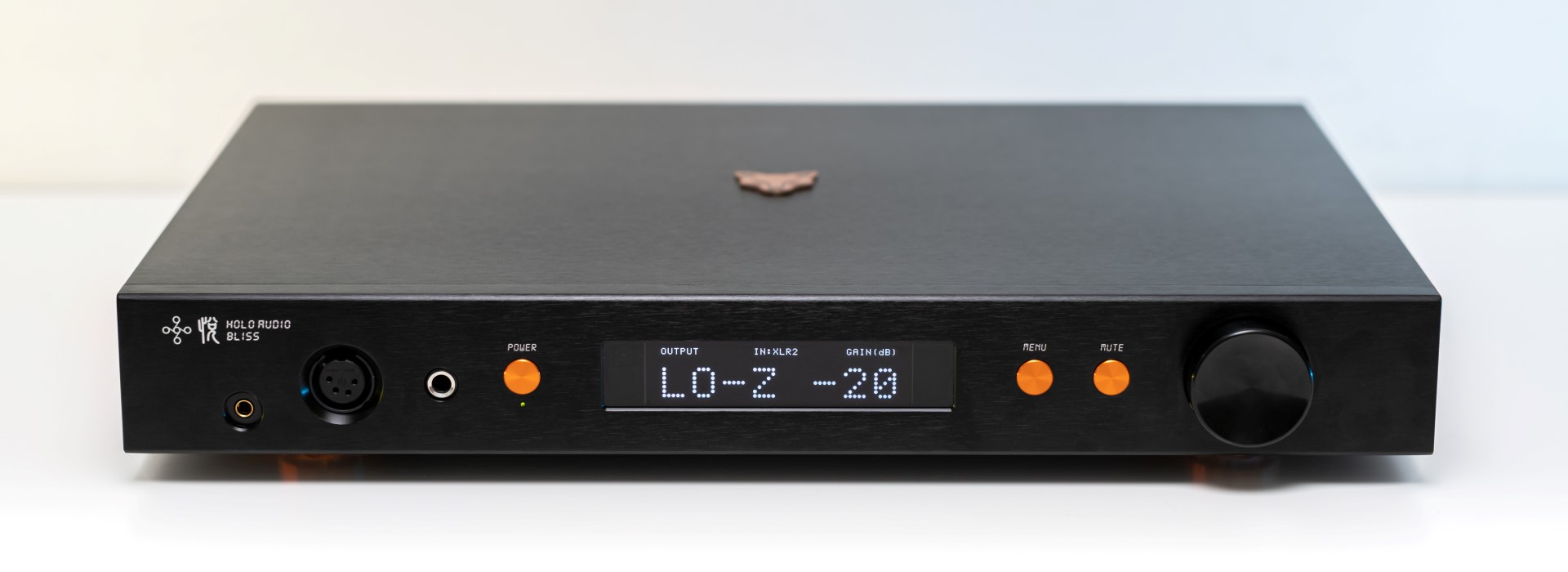
I’ve put quite a few DACs to the test around here. However, when it comes to headphone amplifiers, let’s just say that, apart from two brands I haven’t tried yet, my choices are dwindling day by day.
A while ago, a publication mentioned that, except for the power output, audio amplifiers sound more or less the same. Another publication stated that all DACs sound identical. The online HIFI wars are never getting old and it’s always pop-corn time around here in the evenings. I have very different opinions about these analog and digital creatures. Apart from a few measurements that I consider important, some of these amplifiers will sound incredibly different. I ended up using several amplifiers for their chameleon-like characteristics, as some of them completely change the tonality of a given headphone.
Looking back at my articles published in the last four years or so, besides covering lots of D/A converters, the second spot was taken by headphone amplifiers and that should tell you how much I adore toying around with them.
When you have a single headphone, finding the perfect match shouldn’t require much time invested. However, when your wife has a nervous breakdown seeing you getting (yet!) another pair of headphones, a bigger challenge unfolds in front of you. Finding that perfect amplifier to unlock maximum performance with a plethora of dynamic and planar-magnetic headphones becomes a real challenge. We have already featured a few marvelous-sounding amps, some of them impressed the hell out of me to the point that I decided to buy them. All amps mentioned in Associated Equipment are used on a weekly basis, as frankly, it seems that I have a headphone amp fetish as well. But shush! Don’t tell this to my wife, okay? I’ll offer you loads of headphone amp reviews, and you can throw craft beers in my direction. Do we have a deal?
Ever since Cameron of Golden Sound posted his detailed measurements for the Holo Audio Bliss KTE and shortly after posting his video review about it, some of our amps were becoming jealous, while our wallets started playing hide-and-seek. Holo Audio’s Bliss and especially the KTE version slowly but surely started piquing my interest and with the help of their European distributor (Magna HiFi), a loaner unit was delivered to me, so I could conduct a well-thought review in the usual fashion.
Bliss impresses not only with top-grade components and an expensive BOM, but also with an incredible build quality, sheer size, and weight. It has eight fully discrete amplifier modules working in a fully-balanced configuration, a custom O-core transformer, and some of the best current production capacitors. It always operates in Class-A mode, providing a massive power delivery of 12 Watts per channel. There’s even an actual preamplifier stage that can be used in a two-channel stereo setup. Looking back at its build quality and sexy specs, its hefty $3400 price tag doesn’t feel so hefty anymore, does it?
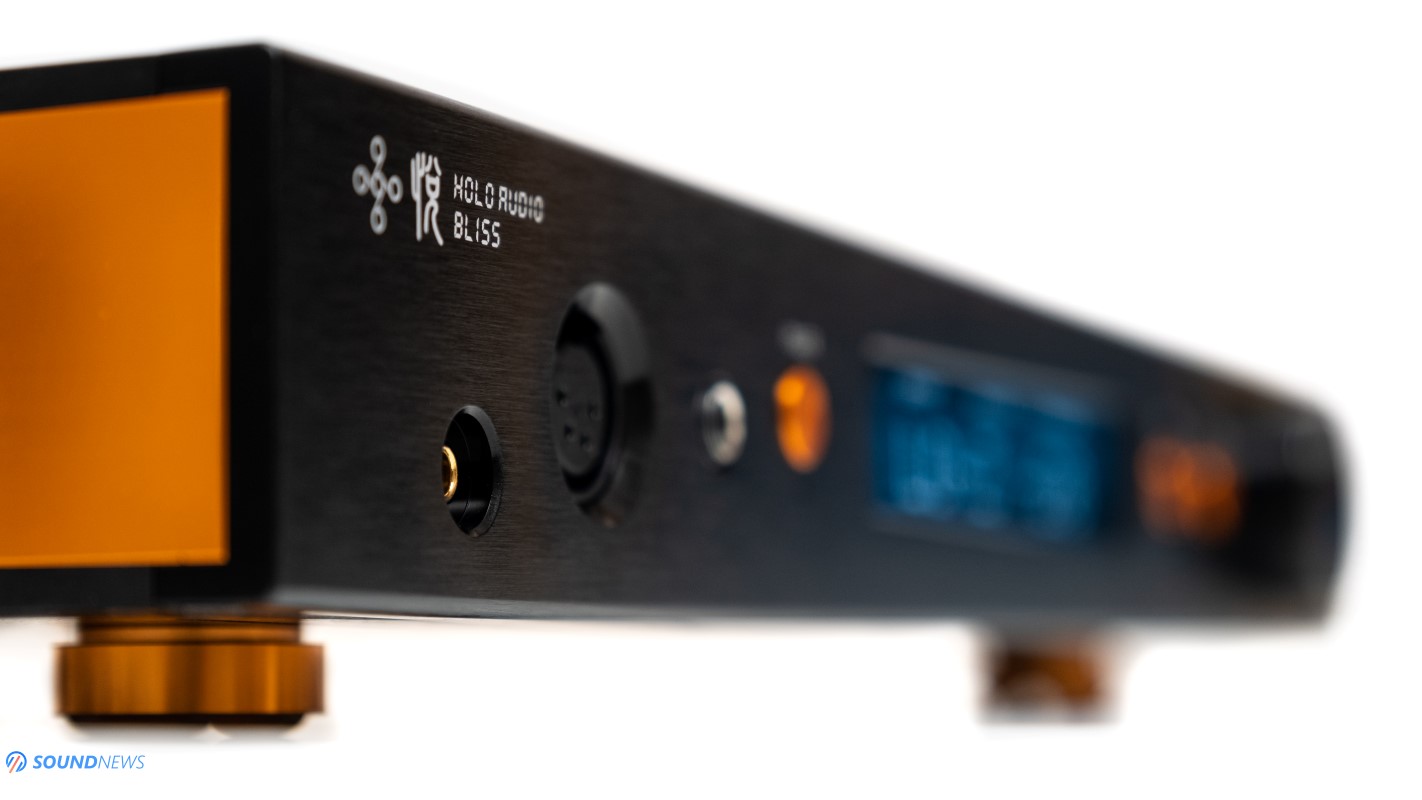
Design & Build Quality
This is my first contact with Holo Audio and as a berserking DAC swapper (if that’s even a thing), I’m a little sad that I’m not describing their May or Spring 3 converters, but it’s all right. Maybe I’ll deliver a May DAC review at a later time.
Bliss impresses from the moment that oversized box passes your front door. Its weight and sheer size already tell me that I will be dealing with a full Class-A amplifier. Its colossal proportions will impress a veteran audiophile; our main headphone amplifier weighs 30 kilos, and while some might complain about the Bliss weight, coming in at 10 kilos, we think it’s the right size and weight for a proper high-end headphone amplifier. End-game-sounding DACs and streamers have pretty much the same size, as you can see from our shots, so I cannot complain about its big size. The only downside I see with this one is that it might be a little too much for a small desk that already holds a sizable monitor and desktop PC. As for the build quality itself, this one is built like a tank with thick aluminum plates all around that should protect its internal components from any nasty wireless interference. Its front plate has a thickness of about 11 mm, and the lateral panels have a thickness of 8 mm, which already goes into the extreme, but you can never be too careful about high-end audio, right? Taking into consideration every solid-state headphone amp that passed through our door, except for Flux Lab Acoustics Volot and Audio-GD Master 9, it dwarfed any other headphone amplifier, looking more like an integrated amplifier.
Instead of using off-the-shelf metallic feet with rubber inlays, as most amplifier makers are doing, they went ahead and carved their own feet on CNC machines, which hold five gel inserts per foot that will absorb all vibrations coming within the unit. In the usual Holo Audio fashion, you can see plenty of orange accents throughout its body, and if you’re going for the KTE version, you’ll get a cool fox head in the middle of the case, suggesting its flagship status among Holo Audio ranks. Since I’m describing a full Class-A amplifier, it means that about ~75% of the consumed power will transform into heat, but thanks to several openings found just below its power transistors and on its back panel, it gets only moderately hot, so please don’t bring those eggs from the fridge, it won’t cook them properly.
Long story short, it screams high-quality craftsmanship, and I wish more companies from Asia would adopt such high-quality standards. It looks industrial and refined at the same time, with straight lines and bold looks. Forget about the WAF, it’s out of the window with this one; it’s way too big and imposing.
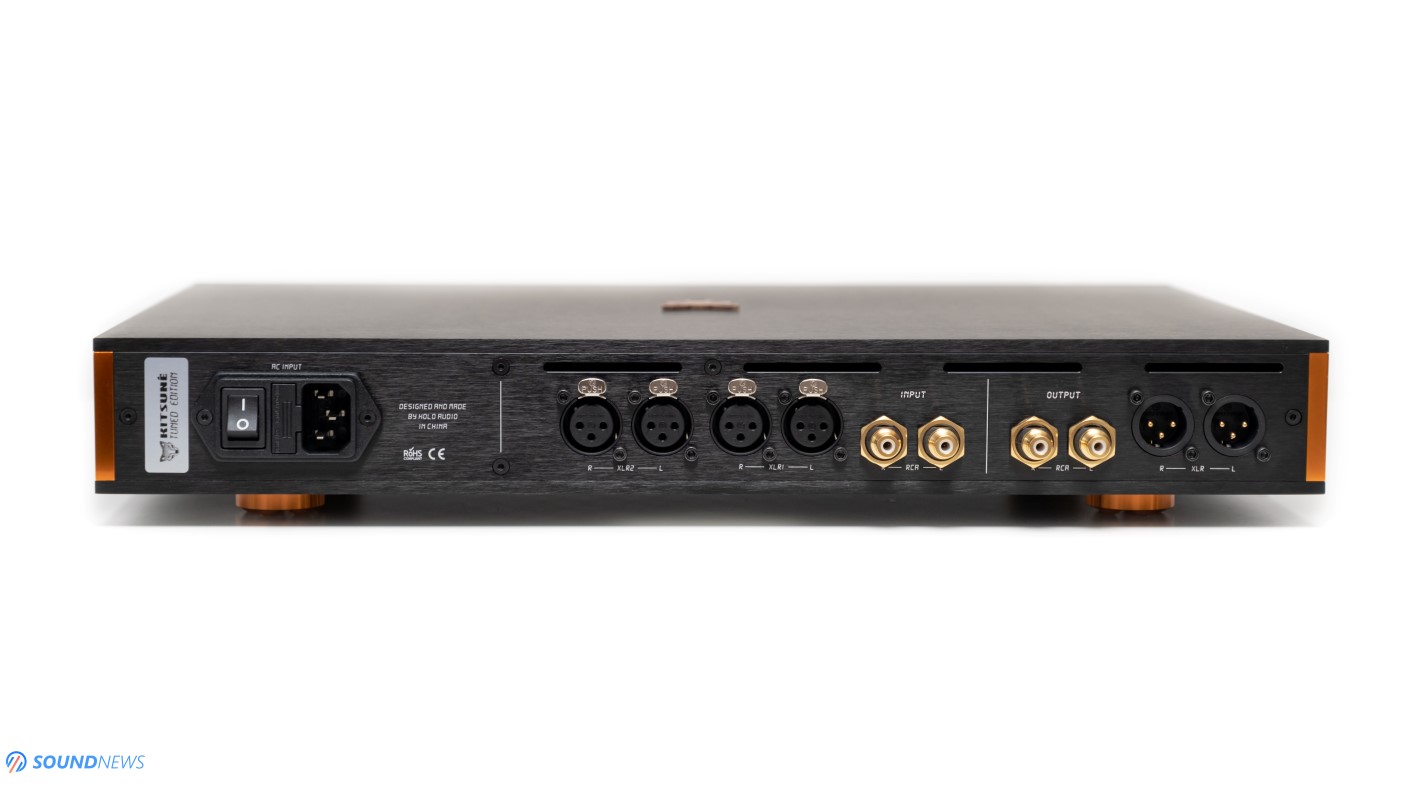
Controls & Connectivity
Holo Audio, I must say that you outdid yourselves with this one…4-pin XLR, 6.35mm, AND 4.4mm balanced outputs? My headphones are wiggling their cables already. Jokes aside, many desktop and portable headphones are bundled with 4.4mm cables (Sennheiser HD800S is a good example), and with most desktop headphone amps, you are forced to buy a 4-pin XLR cable just to experience the might of the balanced connection. However, that is no longer an issue with the Bliss. In my humble opinion, 4.4mm is currently the absolute best headphone connector – it’s fully balanced, it has a wide surface area, so it won’t accidentally damage the headphone socket (I’m looking at you, 2.5mm connector), and it has low resistance/impedance to sustain a large power intake. Hopefully, in time, it will become the only headphone connector for head-fi nerds like ourselves.
Back to our review unit, there’s a monochrome display in the middle, a big volume knob to the right that offers decent physical resistance, and three buttons that will let you power On/Off the unit, engage its UI, or mute the unit.
Now, look at that beautiful back panel and outstanding I/O. I’m glad to see two pairs of XLR inputs (so helpful when doing DAC comparisons) and a pair of RCA inputs. Since Holo Audio decided to bless it with preamp capabilities, you will also find a pair of XLR and RCA analog outputs to be used in a two-channel stereo setup, but more about that in a jiffy.
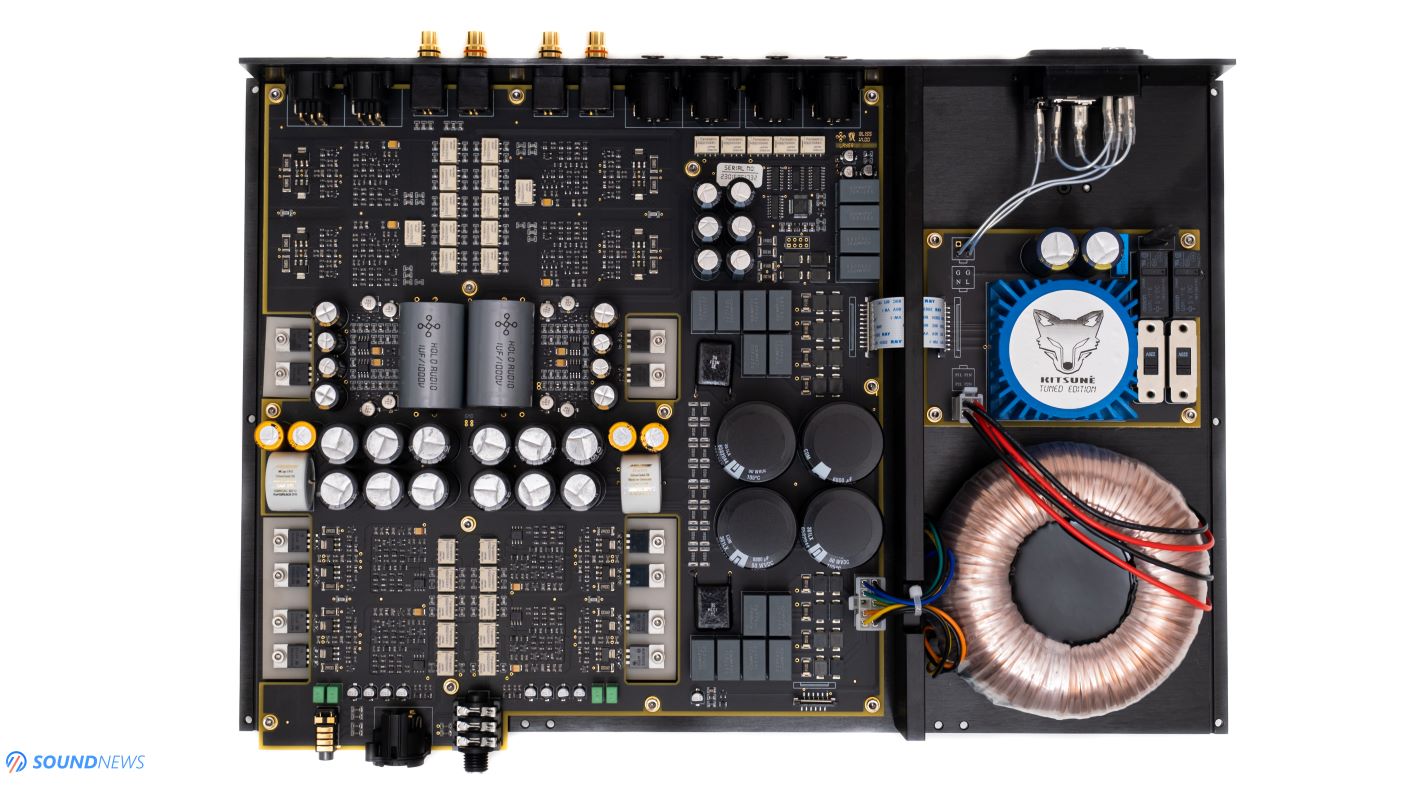
Under Its Hood
Before delving into the review units, I first pop up their hoods to inspect the internal layout, PCB, internal components, wiring, and PSU implementation, as good sonics originate from there.
First and foremost, Bliss can function both as a headphone amplifier and as an active preamplifier in a two-channel stereo setup. Holo Bliss is a fully discrete (no ICs in the signal) Class-A dual-mono amplifier and preamplifier that consistently consumes 60 Watts, regardless of the load. It adopts a fully balanced design with eight amplifier modules. Each of the four available channels utilizes two discrete amplifier modules for buffering and attenuation functions. You can observe that the power transistors have been firmly bolted to the lower part of the chassis, utilizing its case as a passive heatsink.
What’s intriguing about its volume control is that instead of a traditional stepped attenuator or relay-based volume control, Holo Audio opted for a hybrid volume control, employing a substantial number of analog relays to control its gain rather than the power output. It consistently outputs maximum power, and the only aspect you change is its gain. For this reason, you’ll notice the word ‘gain’ displayed instead of volume. Its relay-based gain stage provides 84 steps, ranging from -72 dB to +12 dB. This volume control is quite similar to that of Enleum’s AMP-23R, which also controlled the gain of the amplifier instead of the power output. According to Holo Audio, this led to extremely low channel crosstalk, which holds significant importance in headphone amplifier designs. Achieving low crosstalk ensures an open and wide sound.
Finally, one can appreciate the impressive power supply implementation. The first AC to DC stage is separated by an 11mm thickness aluminum wall, and the second stage consists of overkill filtering and regulation stages, aided by the best-in-class voltage regulators and the fanciest capacitors in the business.
What sets apart the KTE (Kitsune Tuned Edition) version from the standard Level 1 Bliss are the following additions:
- 100VA DUAL O-type Flatwire 6N Copper custom hand-made audio transformers.
- All copper wire was replaced with 1.5mm pure OCC silver wire.
- Replaced IEC inlet connectors with pure silver/rhodium-plated faston connectors
- The stock fuse was upgraded with a Red Nano fuse (gold/silver, graphene, and quartz filtering materials).
- Standard caps were upgraded to Audio Note Kasei capacitors.
- Kitsune Tuned Edition branding has been used all around, and there’s a fox head emblem on its top panel.
Power-wise, we are talking about 12 Watts of pure Class-A power per channel into 32 Ohms via 4-pin XLR and 4.4mm balanced outputs on the LOW-Z setting. Once we move to HIGH-Z, the power decreases to 2.5 Watts into 150 Ohms. But what’s the deal with the LOW-Z and HIGH-Z settings? Back in the day when headphone amplifiers were just invented, planar-magnetic headphones weren’t as popular, mostly because brands like Audeze, Hifiman, or Abyss didn’t exist yet. So, most of us were using dynamic headphones, which would change their voicing (the frequency response) according to the impedance of the amplifier that drives them. A lower output impedance (zero or close to zero) won’t interfere with the damping factor, leaving the signal as pure as possible. A high output impedance will usually boost the bass by a few dB and round the upper treble for a warmer & smoother sound. Sennheiser acknowledged this “feature” and included it into their HDV820 DAC/Amp combo that worked wonders with their upper echelon headphones, such as HD800/S and HD820. Although the high impedance setting can have a beneficial effect on high-impedance dynamic headphones, it’s the other way around with low-impedance headphones, seriously limiting the current intake, the damping factor, and subsequently… making them less snappy and controlled sounding. A common rule of thumb is that the output impedance should not exceed 1/8th of the nominal impedance of the headphones; this is also called the rule of eights. In simpler terms, for a 300 Ohm headphone, you’d want no more than 37.5 Ohms output coming from your amplifier, and for a pair of 16 Ohm headphones, no more than 2 Ohms.
The LOW-Z output has a close to zero output impedance, and the HIGH-Z output sits at 15 Ohms via the 4-pin XLR jack, 17 Ohms via the 4.4mm output, and 8.5 Ohms via the 6.35mm jack.
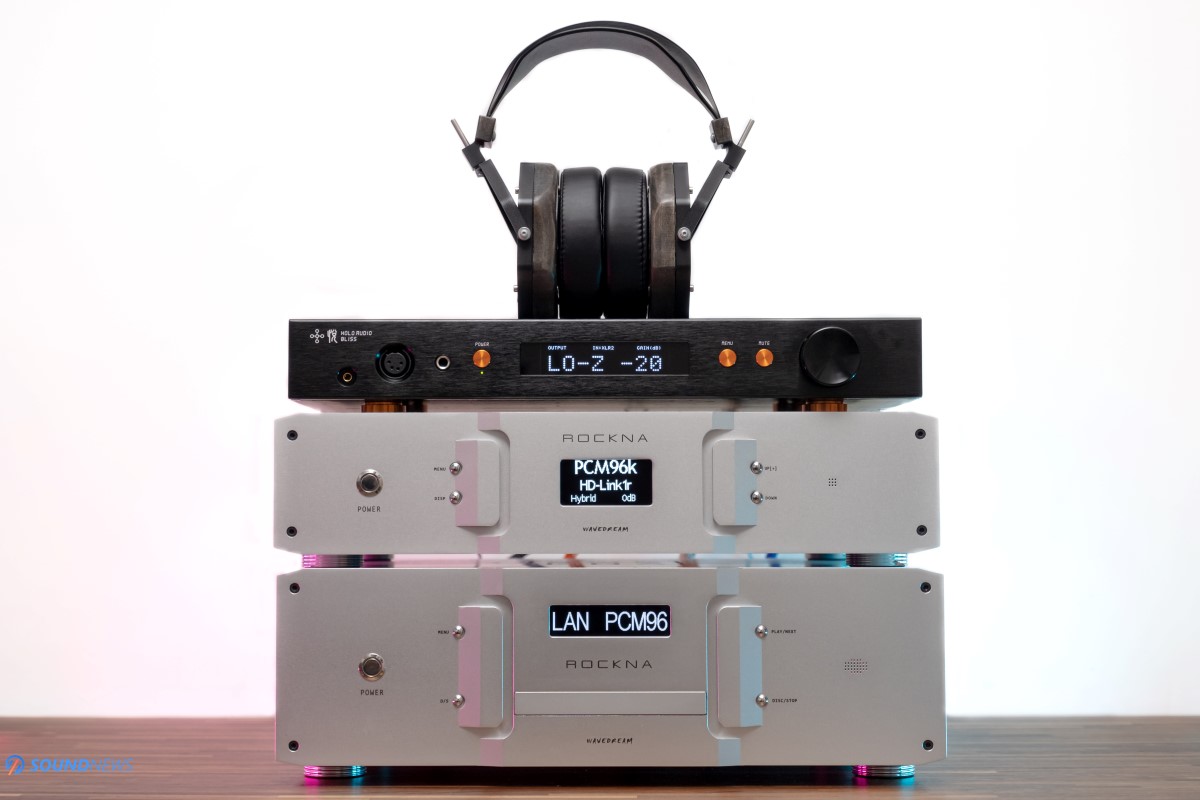
Test Equipment
Holo Audio Bliss proved to be versatile, finding its place in both my stereo and head-fi battle station, and that’s why I used it in two distinct setups:
- In my office, it served as a dedicated headphone amplifier alongside a Rockna Wavedream Signature DAC and Rockna Wavedream NET 4Tb Roon Server / Music Server / Wired streamer. It’s worth mentioning that I took measures to ensure optimal performance, including completely isolating the Ethernet connection with two media converters (Ethernet > Optical > Ethernet) and powering both converters and the wireless router with a KECES S14 linear DC power supply.
- Later on, I moved it to the living room, where it found its place between a Chord Electronics DAVE DAC and Chord Ultima 5 power amplifier, effectively replacing the Chord Ultima 3 Preamplifier. The Wavedream NET 4TB still served as the Roon core, and the Roon endpoint was an EverSolo DMP-A6.
All right, everyone, I’ve prepared a glass of gin and tonic, my body and soul are ready for some well-deserved music, so let’s hit some eardrums!
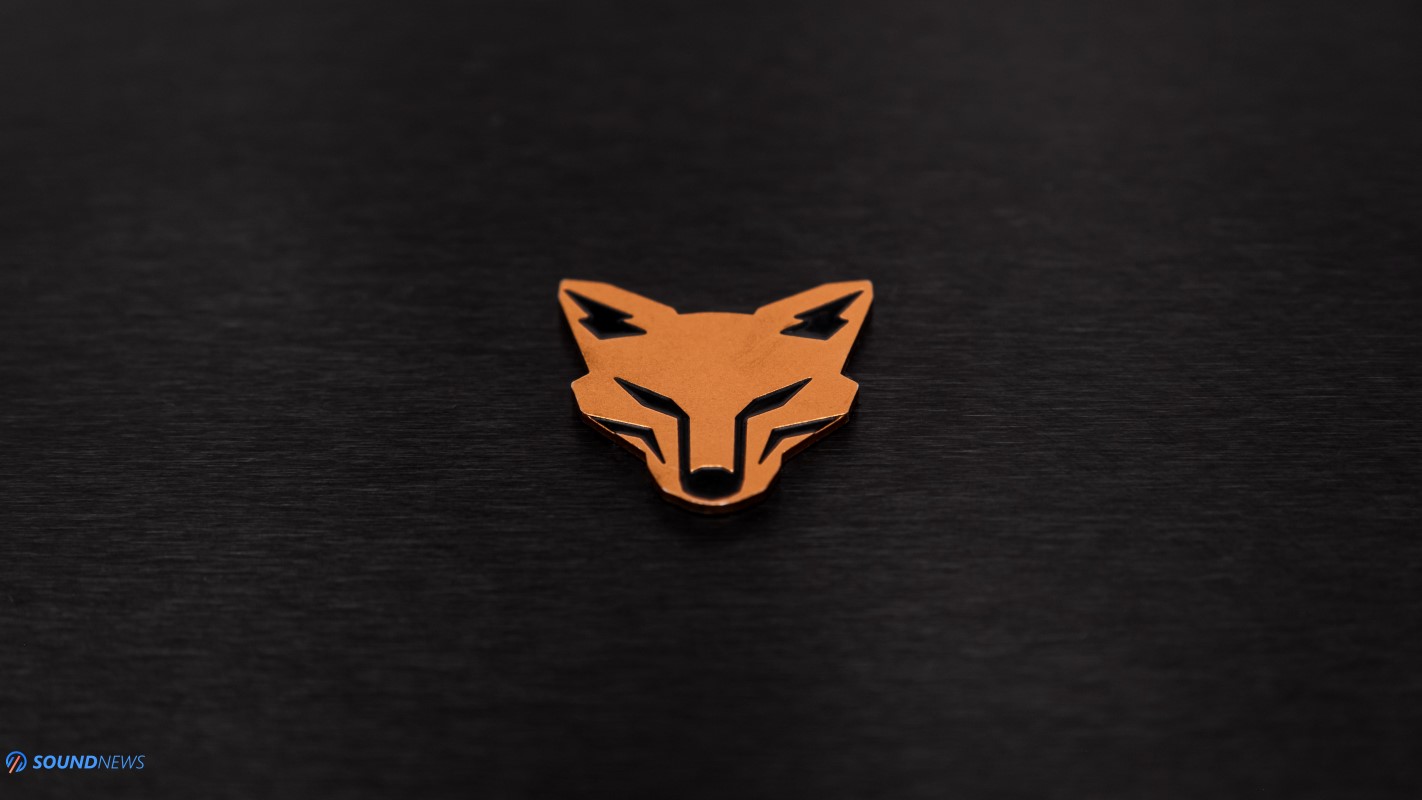
Sound Performance
I. Preliminary Sound Impressions
Luckily, the Bliss KTE loaner that arrived a week or so ago came fully burnt in, so I didn’t need to let it play for at least a week to unleash its potential. The only thing I needed to do was wait for an hour, as all discrete amplifiers with longer signal paths usually need some time to reach an optimum working temperature.
Impatient as I am, I plugged it in immediately and started listening to a pre-prepared playlist that would take me on a rollercoaster ride, testing its technicalities and voicing. At first, I felt a little disappointed as the dynamics didn’t quite hit the sweet spot, something was seriously lacking, especially with the Hifiman Susvara. Where was the punch and sheer bass slam that people were raving about? I wondered aloud. Despite everything else falling into place – the power, holography, depth, note separation, good linearity, and absolute silence between passages – the dynamics felt toned down, making it sound a bit too polite and reserved with planar-magnetic headphones.
The Trafomatic Primavera, being a tube amp, needed about a month to settle in, not just with long run times but cooling hours as well, as the cathode and anode elements form when the tubes are cooling and heating up. Additionally, its oversized transformers and capacitors required at least a week to reach optimum parameters. So, waiting for an hour or two wouldn’t hurt anyone, right?
Once the top plate brought up the heat, the dynamics also came to life, and what a massive change of pace it was! It was almost unbelievable. From a polite and shy-sounding amp that barely touched the lowest octaves, Bliss transformed into a monster amp, stomping over my previous impressions with its giant metallic feet. On a more serious note, it redeemed itself, as dynamics are probably the most crucial aspect in amplifier designs. We all love to be carried away by relaxing music at the end of the day, but we love it even more in the morning when it brings forward more energy than morning coffee. The Hifiman Susvara, known to challenge traditional headphone amplifier designers due to its power requirements, found its match with Bliss at the helm of my headphone setup. The music came back to life, bottomless bass notes hit my eardrums relentlessly, the midrange retained its neutrality while sounding graceful and refined, and the treble remained engaging. I didn’t feel the need to push it to its upper power limits; although it provided plenty of headroom, it never felt out of breath, and the dynamics remained intact.
At first, the thoughts that Bliss planted in my head weren’t about powerful dynamics, but rather about its incredible depth, note separation, and holography. I now understood why this band of brothers called themselves Holo Audio…something changed when Bliss replaced a few solid-state amplifiers, and it wasn’t just the impressive stage size that caught my attention from the beginning. The holography was something that won me over. Soundstage and imaging may be overrated when it comes to headphone listening, but I couldn’t deny that these two factors led me to buy the Trafomatic Primavera in the first place, but more on that later. My second thoughts were about its good linearity. There are two types of linear-sounding amplifiers – those that make your music sharp-sounding, usually employing noise-shaping techniques and negative feedback, and those that do not. For example, headphone amplifiers with THX-AAA tech fall into the first category and NFCA designs of Topping and PLFC designs of SMSL also resemble that sound to a good extent. However, all of those are trying to hide the noise below the threshold of human hearing, and when you do that, something else goes down – the soul and naturalness of the music. Bliss, on the other hand, never sounded artificially sweet. Its midrange, bass, and treble output remained true to the source, creating a linear and honest sound, but what sets it apart is that it sounded right from the get-go. Thought number three was the peace of mind it brought forward – how effortlessly everything was delivered to the listener. During my reviews, I try to push the units to their limits, testing them with difficult tasks and sometimes doing poor system matching intentionally. For instance, Hifiman headphones, though technical and highly resolving, need a specially tailored system to sound great with aggressive music. Put a pair of HE1000SE on a THX-AAA amplifier, with a chip-based Delta-Sigma DAC doing the digital-to-analog conversion on heavy-metal tunes. Some things just don’t work until you find a solution. Surprisingly, with Bliss driving any Hifiman headphones, I could listen to… everything, and I was never bothered by piercing trebles. There was always some effortlessness that removed the grain and glare, which, sadly, only fully discrete Class-A amplifiers have mastered so far.
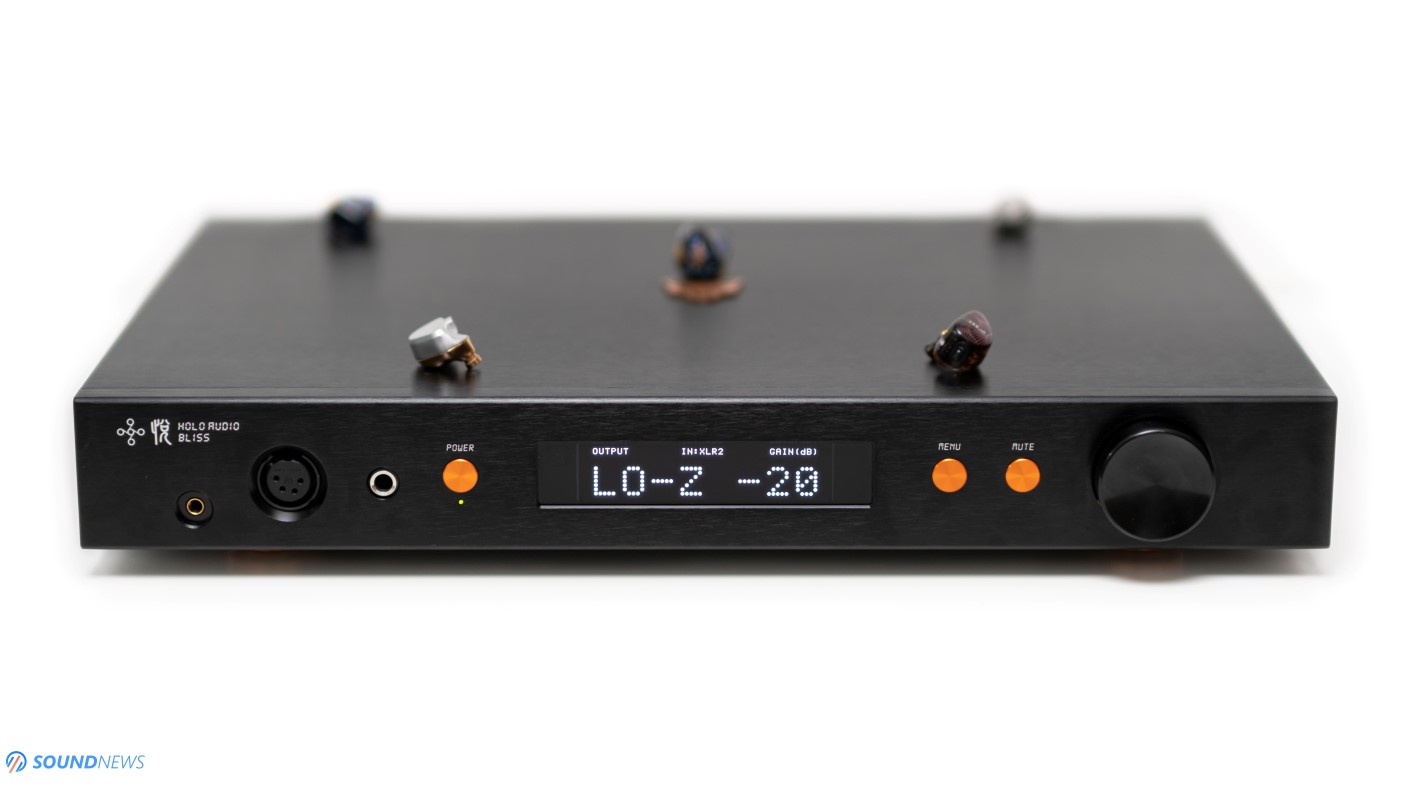
II. Noise Floor & IEM Compatibility
When designing 10-kilo amplifiers capable of delivering 12 Watts per channel in 32 Ohms, always working in Class-A mode for the most demanding loads out there, the last thing you would do is connect sensitive portable headphones, let alone ultra-sensitive IEMs…but not on Holo’s watch. I must admit, I’m a little disappointed that Holo Audio didn’t publish their own noise measurements because I genuinely believe that Bliss has one of the lowest recorded noise floors among headphone amplifiers.
A while back, I owned Benchmark’s HPA4, which, at that time, had the lowest measured noise floor. However, as time passed, much more affordable amplifiers from the likes of Topping and SMSL managed to reach the same level of performance in noise rejection at much more budget-friendly prices. Nowadays, you can get such ultra-clean-sounding units without breaking the bank.
However, when you create all-discrete amplifiers with ~5 times more components than traditional IC-equipped units, noise becomes a much bigger challenge. I have tested most solid-state Class-A headphone amps around here, and honestly, very few of them were noiseless with sensitive IEMs at normal listening volumes, let alone at maximum volume with music on pause. Of course, nobody would listen at those extreme volumes, but it’s comforting to know that the noise is completely eradicated regardless of the volume or the load.
I’m incredibly impressed by what Holo Audio achieved with their Bliss. Not only is this the cleanest fully-discrete Class-A amplifier out there, but it’s quite possibly the cleanest headphone amp, period. I went ahead and connected five different sets of IEMs, intentionally choosing the most sensitive ones, and to nobody’s surprise, no matter how much I tried via the 4.4mm balanced output or 6.35mm output, I couldn’t detect any traces of noise, even at full power with music on pause.
I’m sorry, but no other amp I’ve tested could match this level of silence at full power, not even Benchmark HPA4, Topping A90, or A90D – and we’ve tested quite a few headphone amps around here. This kind of silence is extremely crucial in high-end audio applications because you can hear absolute silence in between passages when the sound gradually builds up to a crescendo moment. Such silence not only enhances the perceived detail you can hear, constantly pushing you to the limits, but it also contributes to the experience of having a holographic sound that is as deep as the Mariana Trench. It’s needless to mention all the IEMs, sensitive desktop headphones, or any other gear, as it consistently behaved in the same manner, always revealing every small intricacy and fully decompressing the sound on the Z-axis. Color me impressed already, and I eagerly look forward to their next developments that will hopefully deliver even more power. Why? See you in the next chapter.
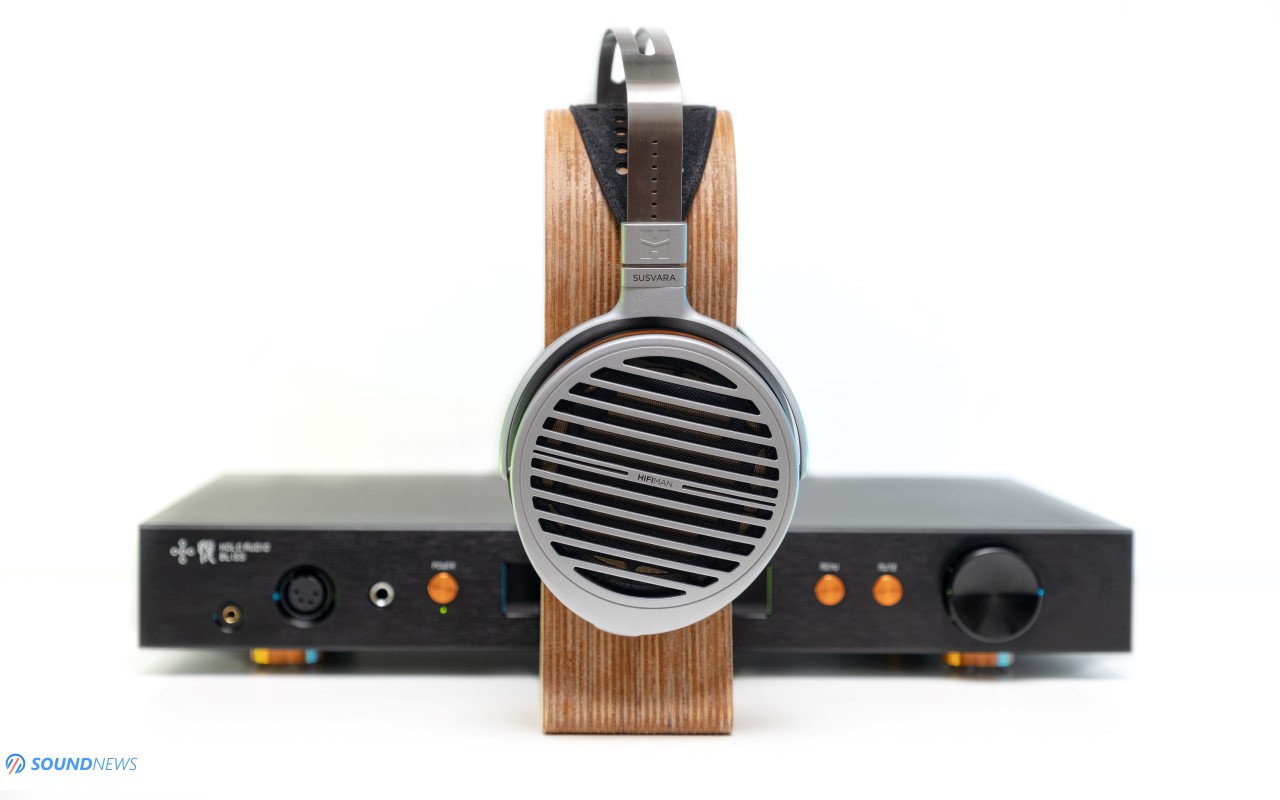
III. Power Output
Bliss is undeniably an extremely powerful amplifier by regular headphone amp standards. Its current delivery offers firm control over planar-magnetic drivers, and the power it provides awakens incredible dynamics and a fun sound signature, with most dynamic-driver and planar headphones. However, it’s essential to note that while powerful, Bliss isn’t the most powerful headphone amplifier, and this becomes evident once you connect headphones like Hifiman Susvara, DCA Stealth & Expanse.
If your DAC outputs a healthier voltage (more than the industry standard 4V) via XLR, then Bliss can fully handle such loads without an issue. Nevertheless, if you’re using a regular 4V output DAC, Bliss might struggle to deliver unlimited headroom with these headphones. I must mention that, while it still sounds fine with Susvara, performing impressively on several occasions, you should not expect massive headroom for high dynamic range tracks, nor should you anticipate the punchiest dynamics. Considering its price, I still believe Bliss performs exceptionally well and punches above its weight class. However, specifically for Susvara users, I’d personally opt for a different amplifier. As a point of reference, I use a 7Vrms output DAC via XLR, which significantly helps, but even with this setup, Susvara didn’t sound as exceptional and lively as I know them to be with top-tier no-compromise amplifiers. Bliss offers 72 dB of gain until reaching the 0 dB level, and there are additional 12 dBs available on tap, but using them may not produce the same level of refinement and effortlessness. Once you go above zero dB, Bliss won’t sound as majestic and impressive as it does below 0 dB, and regrettably, with the Susvara, I need to go above zero.
Setting that aside, every other headphone in my possession has never required reaching the 0 dB setting, not even Audeze’s LCD-4 or Sennheiser’s HD800S, both of which demand a substantial amount of power to be fully driven. On this note, Bliss did an exceptional job with HD800S, prompting a close friend of mine to repeatedly listen to certain passages in surprise, as he was amazed at how fun and natural HD800S became with Bliss. Bliss rectified the biggest drawbacks I had experienced with these headphones in the past. The bass became more lively, almost punchy, particularly with the High-Z (high output impedance) setting, and the upper treble was toned down slightly, transforming an ultra-linear headphone into a more enjoyable and fun-sounding one. The headphone experience didn’t stop there; both the Erzetich Charybdis and Kennerton Rognir revealed a side I had never seen or heard before.
In summary, Bliss offers crazy impactful dynamics when paired with the right set of headphones, and its power feels nearly limitless. However, this might not be the case with Hifiman Susvara and the flagship headphones of Dan Clark Audio. I feel that this aspect hasn’t received enough attention online, and I wanted to shed some light on the matter. While I don’t anticipate a Bliss V2 shortly, if Holo Audio is already gathering information about a possible successor somewhere down the road, they should consider all the latest flagship developments, such as Hifiman Susvara, DCA Stealth, Expanse, Abyss AB-1266 Phi TC, and other low-sensitivity headphones that might get released in the future.
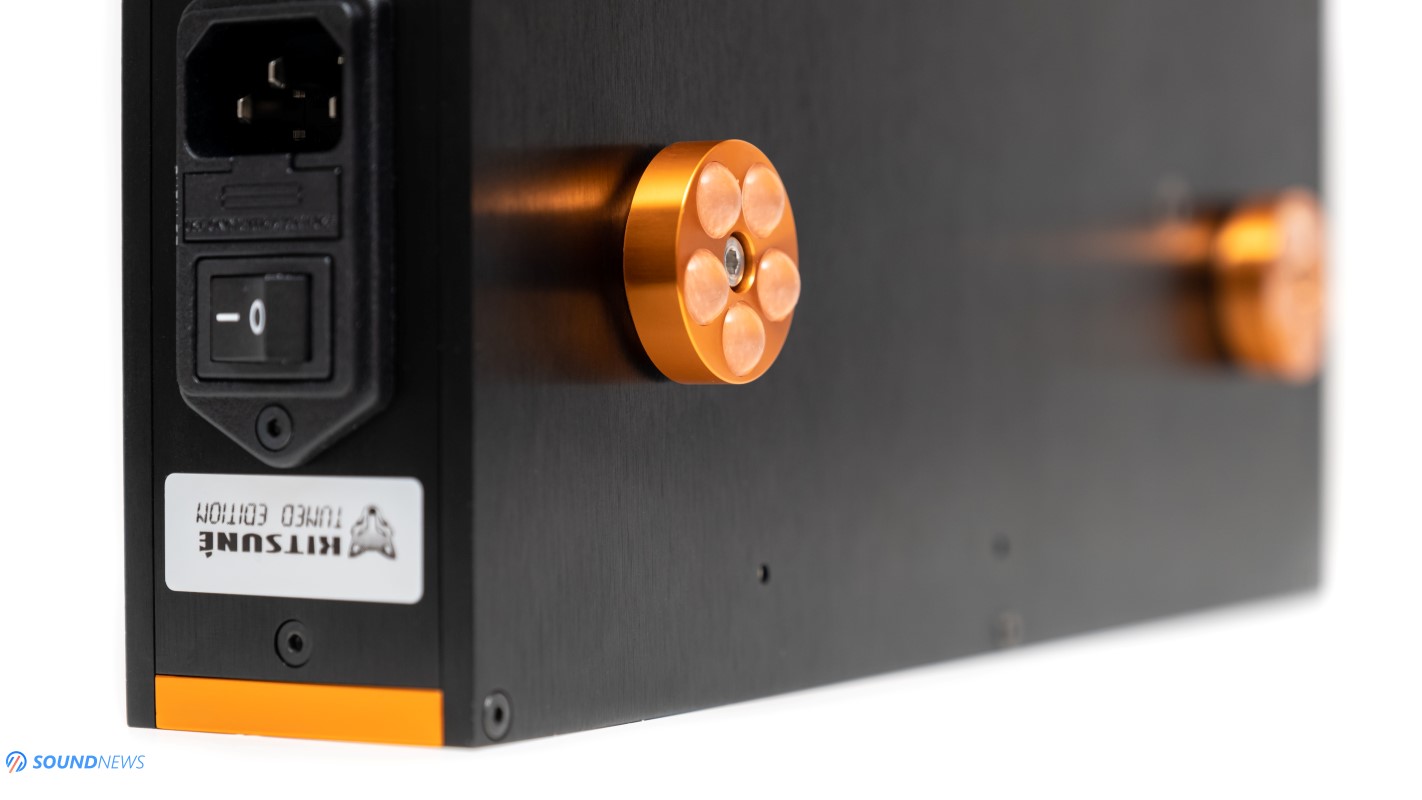
IV. Dynamics & Transient Response
As I blacklist all those low-sensitivity headphones, Bliss feels like a changeling, exchanging my eardrums for punching bags. Regardless of the music or volume, you can sense a higher sound pressure even at lower levels – exactly how a proper Class-A amplifier should behave.
The music gains heft and weight, and your imagination starts playing tricks as the sound slowly takes shape. Bliss is biased into constant Class-A operation, delivering a constant current for outstanding dynamics at idle and full power. When the music plays, it’s a real challenge to find any flaw, like searching for a needle in a haystack. In my recent Meze Elite review, I mentioned that Elites can transform from obedient creatures to frenzied pugilists with the right amplifier driving them. While clean and resolving on most amplifiers, only a proper amplifier the size of Bliss can make them emotional and make me toe-tap as if I had twin pedals beneath my feet. A close friend who also owns the Elite visited me today, and he was ecstatic, rapidly changing tracks and exclaiming once a minute or so. Bliss infused more life into them, and I can certainly say that it reaches and maybe even surpasses the raw elements of Ferrum’s OOR and Burson’s Soloist 3X GT. They are very similar in this regard, having an excellent sense of speed, rhythm, and timing.
Speaking of speed, if you think Steve Vai, Yngwie Malmsteen, Eddie Van Halen, or Joe Satriani are still the fastest and most technical guitar players of all time, you should hear Tim Henson’s work with Polyphia. This guy is so young, but man, look at his hands playing the guitar, can you see them? You’ll need a higher refresh rate monitor for that to happen. When I engaged in Playing God by Polyphia (Qobuz / Tidal), I can certainly say that Tim feels like a God to most guitar players around the world. The plucks were hard, and the hits were powerful to the point of becoming visceral. Regardless of how fast his hands moved around the frets, I didn’t feel that Bliss was mashing the sounds together in a salad bowl. Everything felt clear, crisp, fast, and dare I say, thumpy sounding. Clearly, we are dealing with an amp capable of calling down the thunder with the right music and headphones, and it won’t lag behind your tunes no matter what.
When I listened to Mombasa played by 2Cellos (Qobuz / Tidal), the ear-pounding thumps were palpably felt with the help of Bliss. The cellos took on a rough and gritty character, their beautiful forms seemingly sculpted right before my eyes. Instead of a serene and refined cello performance, the musicians intentionally shredded their bows, creating an almost electrifying metallic sound. Can you head-bang and raise those horns high while two cellos were accompanied by subtle percussion work? You’ll rock out as these talented musicians infuse the traditional purpose of a cello with more energy and rawness. Bliss effortlessly channeled that extra surge of energy, making it impossible for me to stay still while listening to this track. My head bangs and toe taps couldn’t help but respond with enthusiastic intensity.
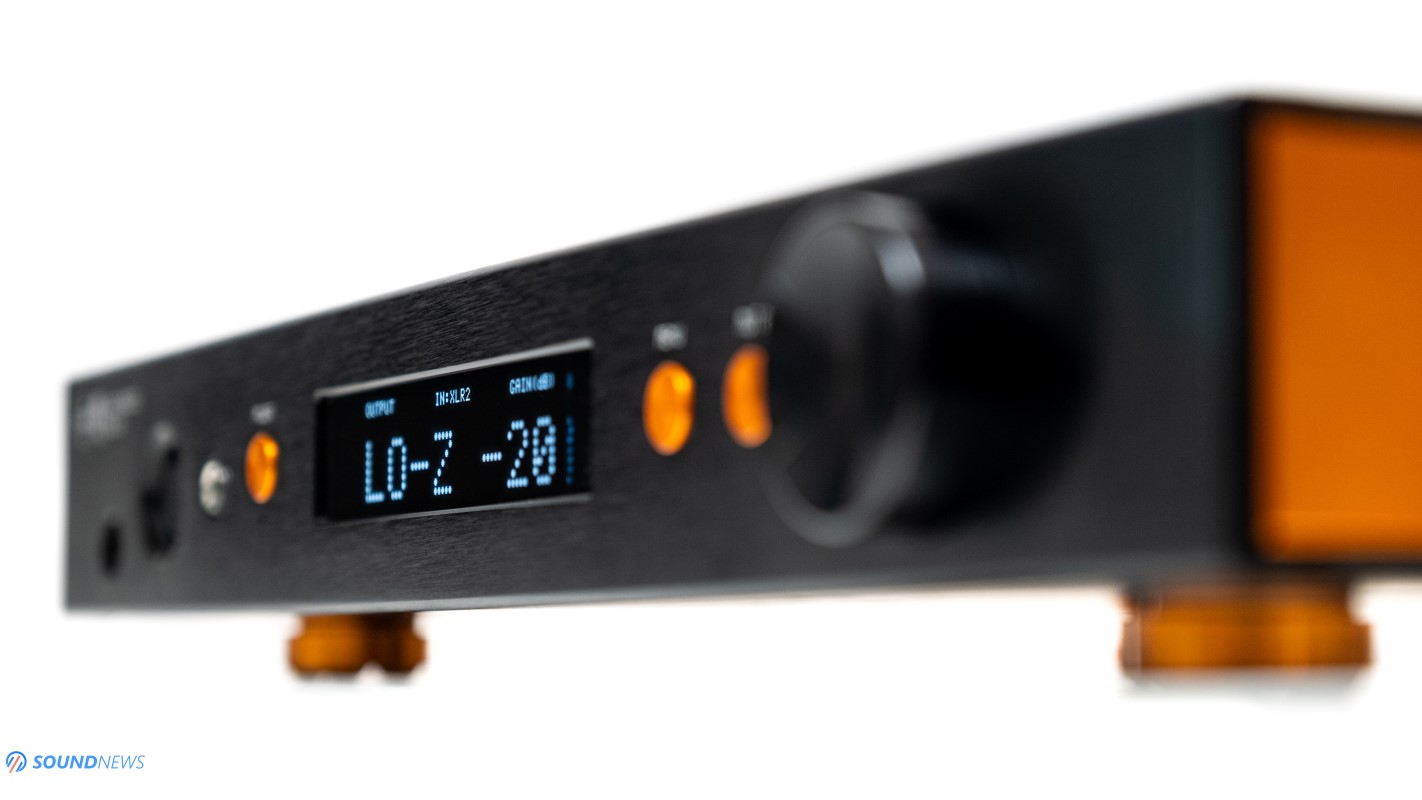
V. Resolution & Transparency
Upon opening its hood, you’ll discover hundreds of components dispersed all around, each with the potential to impact the sound, be it big or small. The signal path is longer in comparison to an op-amp-based build, making it a complex unit that on paper, shouldn’t deliver a pristine, crystal-clear sound. On the contrary, it should take us to a veiled sound that lacks transparency. Some time ago, I sold my Audio-GD Master 9 due to these specific reasons. It failed to match the transparency of even the modest $500 HeadAmp Gilmore Lite MK2 that sat nearby. Holo Audio has achieved something impressive with the Bliss, managing to keep my tunes clean and well-defined. The extremely low noise floor played a significant role in this achievement, as it allowed even the smallest intensity notes and subtle air fluctuations, possibly overlooked by the mastering engineer, to be audible. From the very first minutes of play, you’ll notice that Bliss is a highly resolving unit. It’s an intriguing sensation as if an inner voice assures you that everything has been immaculately cleaned up. In my humble opinion, it shares similarities with the Ferrum OOR, Burson Soloist 3X GT, and Flux Labs Acoustics Volot, perhaps offering an even cleaner overall performance and approaching the transparency of Enleum’s AMP-23R, though without the extra definition and crispness in the treble.
Throughout the history of analog amplifier designs, the primary goal has always been to preserve the signal’s purity and dynamic range without adding any coloration or altering the outcome. After almost a century, the bottleneck is no longer the amp itself, as it had often been in the past. With amplifiers of this caliber, the bottleneck shifts to your downstream equipment – your source, transport, and DAC and that is the highest praise I can give to the Holo Audio Bliss KTE.
I didn’t feel that anything was out of place, and even the tiniest fluctuations of air were present in my tunes. However, one thing you’ll never experience with Bliss is over-sharpness and strong leading edges that could lead to a clinical sound. The higher registers are clean and extended, without any harshness or gritty artifacts. Bliss is devoid of such things, and this is exactly what I meant by good linearity.
With hundreds of recordings attempting to bring Antonio Vivaldi back to life, I’ve had the opportunity to explore the vast majority of them thanks to streaming platforms like Qobuz and Tidal. One of my recent discoveries was Vivaldi: Concerti per duo Violini by Harmonia Mundi Records (Qobuz / Tidal). Can fresh Vivaldi concertos still surprise you with new revelations? Absolutely! This spirited collection of concertos, designed for two violins exchanging intricate figures, rhythms, and phrases, creates an ever-growing sense of excitement and passion. The depth and clarity of Bliss added an electrifying and sensual dimension to the music. Some movements felt grand and flamboyant, especially where the solo parts began with dazzling flourishes. The flawless synergy between Giuliano Carmignola and Amandine Beyer elevates the performance to a new level, offering a captivating and extraordinary experience.
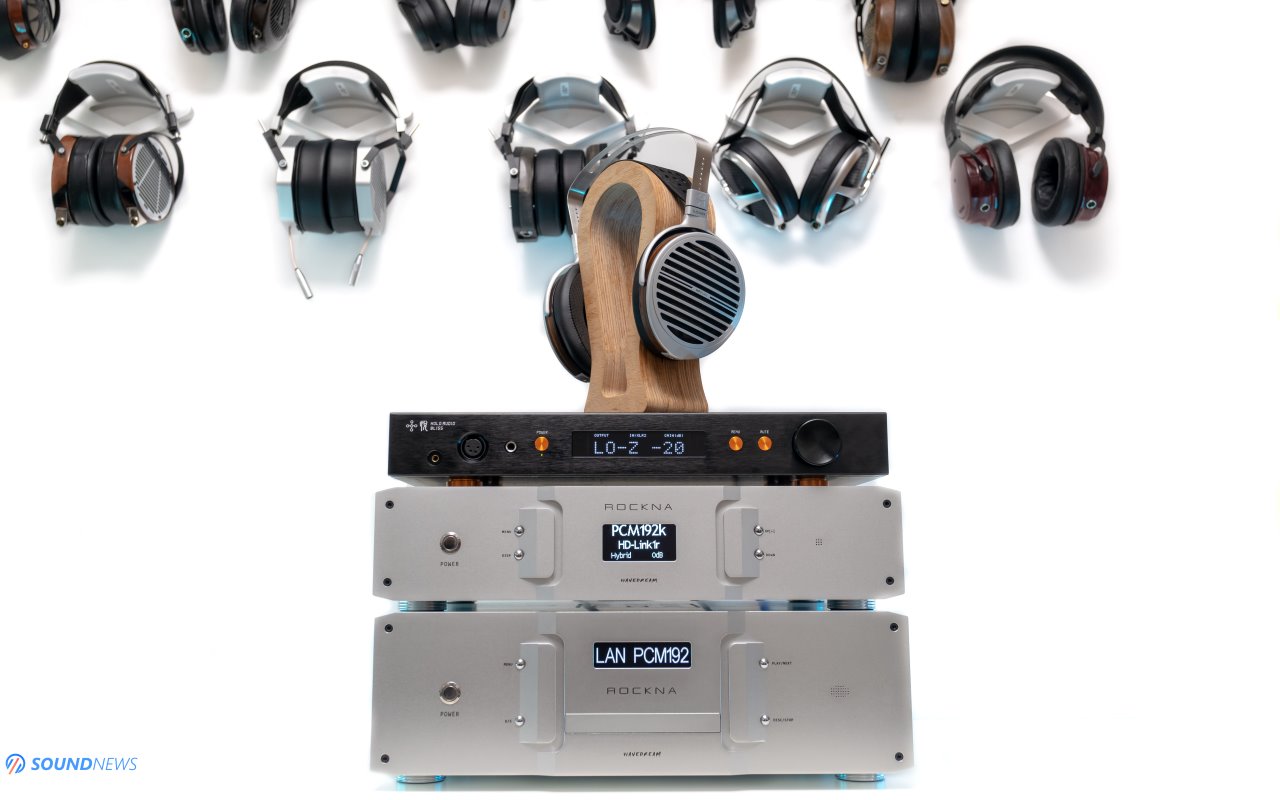
VI. Soundstage & Depth
The very first solid-state headphone amp that sparked my imagination was Audio-GD’s Master 9. A few years later, Flux Lab Acoustics Volot felt like a spiritual successor, pushing headphone listening into a new era of not only massive-sounding amps but also deep-sounding ones that were mimicking the sound of well-made tube amps. When Trafomatic’s Primavera landed at our HQ, it forever changed headphone listening in a very big way, especially in terms of layering, depth, and note separation. The difference was so significant that I decided to get one for me as my open-back headphones transformed into small speakers sitting a meter away from me, eliminating all strain and listening fatigue with its zero-feedback design.
Bliss tries to mimic the traits brought forward by the Primavera, but it’s closer to Volot when it comes to the scale of the music. Soundstage is still quite an overrated aspect via headphones, but let me tell you that once this isn’t only your biggest hobby, but your full-time job as well, the last thing you want is getting listening fatigue. Bliss eliminates that strain and the sounds won’t collide or compete for your full attention.
It’s like being in a theater, where regardless of the play or your seat’s position, once you focus your sight and hearing, the stage belongs entirely to you in all its glorious beauty. Bliss effortlessly expands and contracts the sounds; intimate underground jazz will feel as if the musicians are in your room, and big orchestras will feel like there’s more room all around you. This sound implosion and expansion isn’t an easy treat to pull off and it’s not solely dependent on the music. The amps that were using a good deal of negative feedback were…unsurprisingly never unlocking my imagination, it’s like a sheet of paper appears in front of you from where the sounds would radiate. Zero-feedback full discrete amplifiers would tear the paper and pop the sounds all around you. It’s no longer about turning your head to your left ‘n right, it’s about turning your head like an owl, surrounding yourself with music, even with notes coming from behind your back.
When Earth Melodies by Ekaterina Shelehova (Qobuz / Tidal) started playing…I stopped whatever I was doing and reclined my chair. Words fail to describe the emotions I felt at that exact moment. The first notes and the building intensity made it feel like Mother Earth was summoning the elements. I went through fear and uncertainty, then seconds later, I was scaling an icy mountain, trying to reach its peak. I felt closer, and then happiness enveloped me, followed by a sense of peace, guided by a soothing voice. In just 2 minutes and 30 seconds, this simple yet majestic track led to a spiritual awakening. Try it for yourself, but do so in complete silence and solitude. The way so many emotions could be evoked with just a single organ piano and shamanistic voice without uttering a single word is beyond my comprehension. Ekaterina’s low-intensity growls, long sustains, and high-pitched voice sent shivers down my spine. I was amazed at how deeply her voice was embedded in the mix, piercing through the rich sounds of the organ piano, taking center stage before my very eyes. While I can’t guarantee you’ll have the same experience, a part of mine was undoubtedly due to none other than the Bliss.
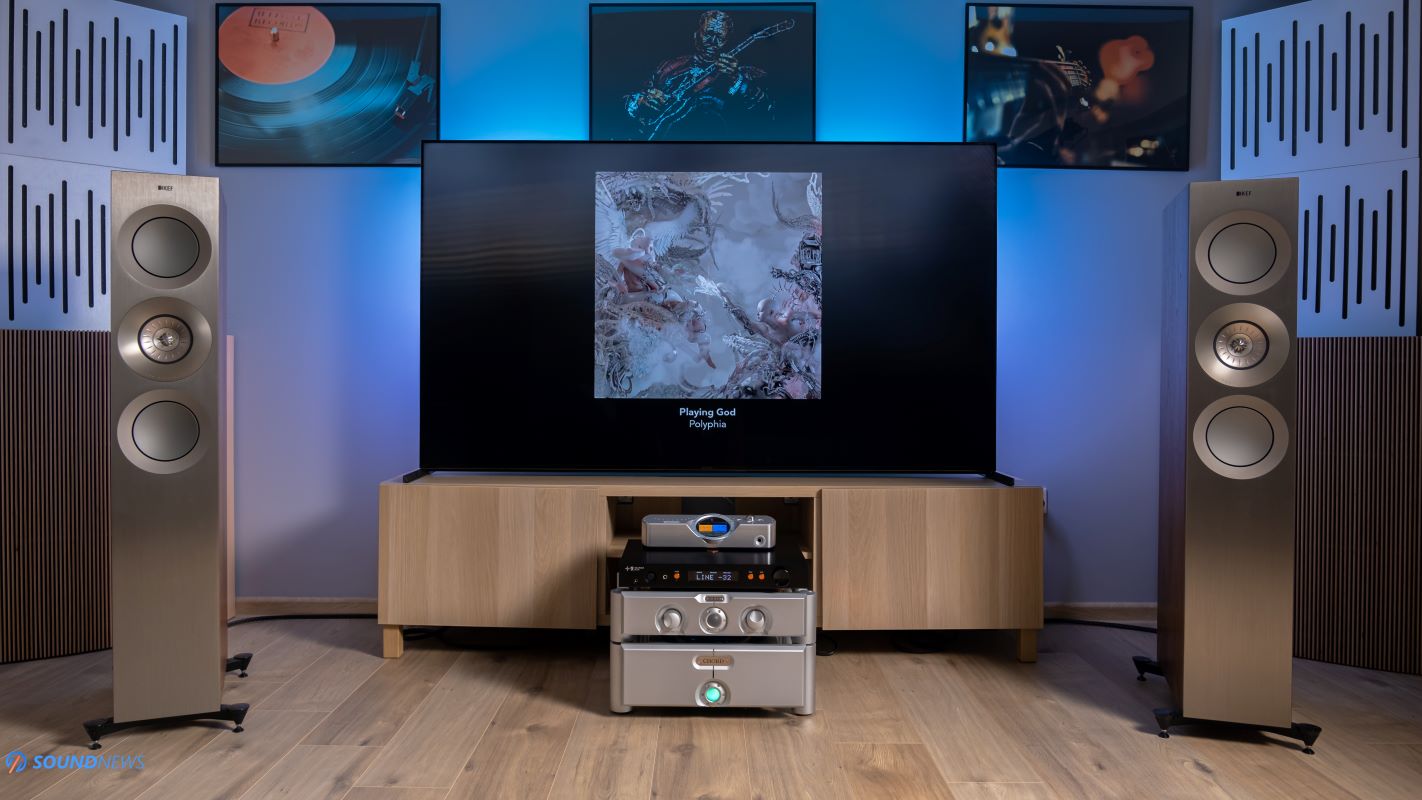
VII. Holo Audio Bliss KTE working as a Pre in a Stereo setup
A while ago, I tested the $1200 Musician Audio Monoceros preamplifier, and before that, I owned the $3000 Benchmark HPA4 preamplifier. Both of them sounded good in my stereo, although they required specific downstream equipment for a perfect system match.
A few months ago, I upgraded to a $9000 Chord Electronics Ultima 3 preamplifier, which completely changed the sound of Chord’s DAVE in quite a significant way. According to Rob Watts, DAVE won’t need a dedicated preamplifier as it already acts as a marvelous passive preamplifier, losing little to no resolution when lowering its volume. Following his advice, I connected Chord’s Ultima 5 directly to the DAVE, and for a few months, I was content, controlling the output via DAVE’s remote control. However, out of curiosity, I borrowed an Ultima 3 Pre and was pleasantly surprised. I noticed substantial improvements not only in timing but also in low-end control, stage size, depth, and pure dynamics. The difference exceeded my expectations, to the point that I couldn’t listen to music without it added to the chain. Ultima 3 is an active preamplifier, supporting much hotter signals, up to 10V to be precise, capable of outputting up to 17V at full power. Built from the ground up, it takes advantage of the latest developments in low-distortion power supplies, and its advanced circuits offer exceptionally low noise and stable amplifier operation.
When I replaced Chord’s Ultima 3 Pre with Holo’s Bliss, I can’t say that the sound lost some weight or that the low-end wasn’t as controlled as before. Its effortless, holographic sound was immediately picked up by my speakers, and for a moment, I told myself, ‘This is a really good preamp,’ adding just a bit of depth and oomph to DAVE’s sound. Bliss lacked that light-footed and highly resolving sound of Ultima 3 Pre, the layers weren’t as deeply separated, and micro-level information wasn’t pushed forward in the same manner. However, apart from that, Bliss performed like a rock star and never felt shy about it. Every sound characteristic I described in previous chapters moved to my stereo, except that it didn’t energize and light up the inner fire like Ultima 3 Pre did. Obviously, I’m comparing apples with oranges here, as Bliss is almost three times more affordable. Holo Audio is separately offering a dedicated preamplifier called Serene, which I’m sure solves the biggest cons of the Bliss working as a Pre, and if you solely need a Preamp then Serene looks like a much better deal.
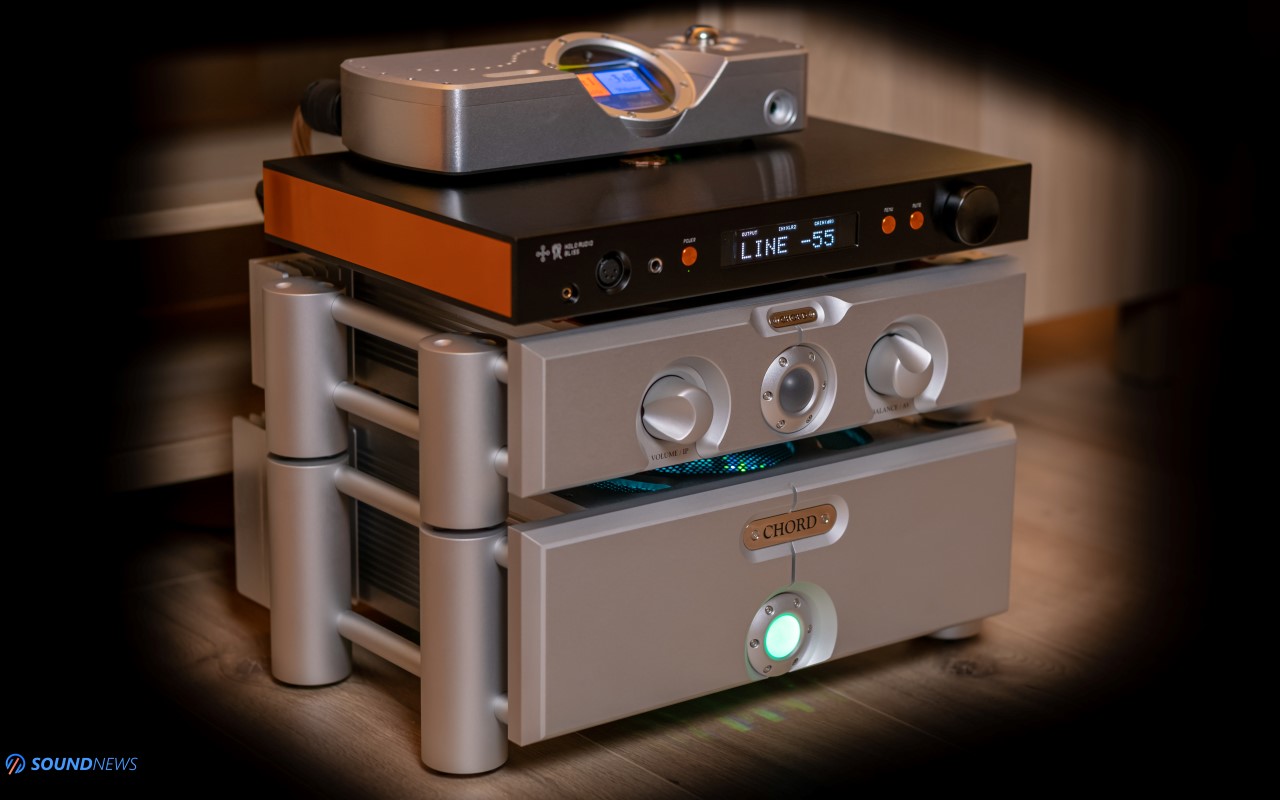
Frequency Response
XIII. Bass
There are two versions of the Bliss when it comes to dynamics and bass definition. The first version comes forward when you power on the unit, and it will stay like that for about an hour. You don’t want to shake hands with the first version that feels shy and too soft, lacking heft, dynamics, and control. Roughly an hour later, a very different version of Bliss will summon scary bass notes from the deepest pits of Tartarus. Jokes aside, once its temperature stabilizes and its case gets warm, the bass notes will have a higher mass, making their appearance felt in a big way. What impressed me, however, wasn’t just the deep-reaching bass that awakened even the lowest octaves on linear-sounding headphones. Its texture, shape, and long sustains were considerably more interesting to me. The bass also felt a hair clearer than what I was getting from the rest of our Class-A amplifiers; tiny air movements in the sub-bass were defined and easier to spot. I feel that it will impress you more with bass quality rather than bass quantity. The bass is powerful enough and quite defined, but its low-intensity murmurs are what will truly impress you. I don’t find it overly done; it still very much aligns with the rest of the frequency response, and maybe that’s what puts it into the big-boy amp category.
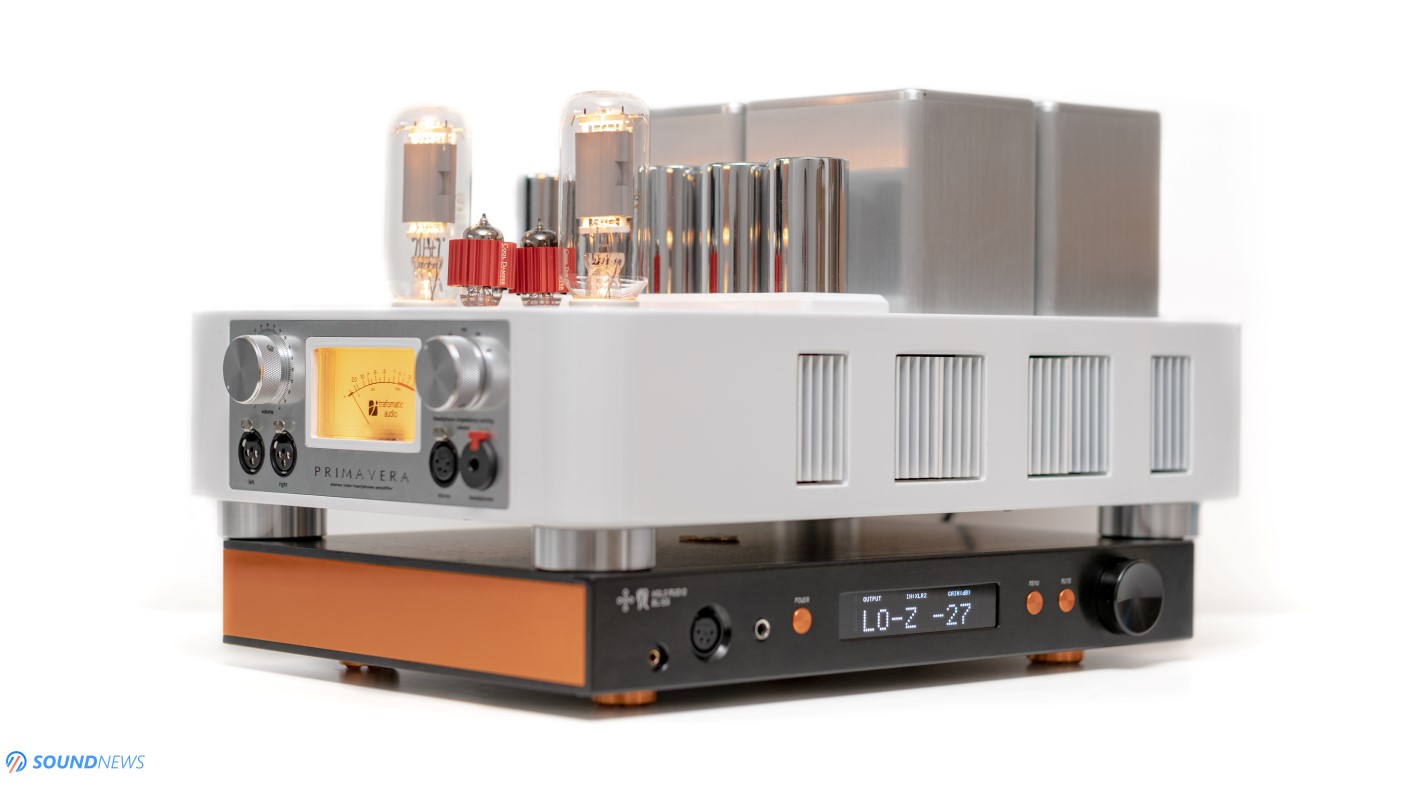
IX. Midrange
As a general rule of thumb, fully discrete amplifiers sound natural and organic. The midrange purity is a highlight of such amplifiers, and people always praised these abilities. Such amplifiers usually add weight and meaning to wind and string-based instruments. However, a small portion of such amplifiers would sound real and very cohesive, and those were Class-A zero-feedback amplifiers. I use such an amp when the sun isn’t scorching my office (40 degrees Celsius are currently outside my window) precisely for those skills. Bliss adds the same sense of refinement, liquidity, and effortlessness that does justice to vocals, be they male or female. You can feel the weight of their voice, how much air passes by their cords, and the vibrations themselves. The timing and decay are crucial when trying to render the beauty of the human voice or woodwind instruments, and I honestly believe Bliss fully mastered those skills. Some of you might still be powering your Susvara’s with the Benchmark AHB2 power amp, and while that one is still impressive when it comes to dynamics and technicalities, Bliss feels like a 180-degree turn tonality-wise. Bliss won’t offer listening fatigue or traces of dryness, as everything puts me instantly into a relaxed state of mind. A good deal of Class-A amplifiers didn’t have these traits, sounding grainier and not as natural or liquid as I wanted, but it seems that Bliss was cut from a different cloth.

X. Treble
The close second reason you might want to go with a discrete Class-A amplifier has to do with the rendition of the treble. I might have said that before, but this is exactly why Hifiman users are slowly migrating to such amplifier designs. It has nothing in common with detail retrieval or treble extension; it only has to do with how real the trebles are sounding. Remember the harshness of entry-level THX-AAA amplifiers? Well, that’s no longer a concern on the Bliss. What struck me wasn’t its extension, which felt impressive from day one, but the way the cymbals crashed on my eardrums, and the way snare drums fully preserved their short-lived thumps; those things impressed me a lot. If you are coming from an amplifier that has a strong tuning, lifting, or dragging down portions of the frequency response, then Bliss will feel like real music playing just before your eyes. Nothing gets brought forward, and nothing is stomped over. Everything shines, everything feels clear and defined, but nothing would be bothering you at the same time. There was a mild grayness in a few Class-A amplifiers I have tried in the past, but Bliss completely solved that issue. As I was testing its limits, I was also testing its tonality with various headphones, be it Hifiman Susvara, Arya Organic, Sundara, or Sennheiser’s HD800S. Aggressive music wasn’t commanding me to turn down the volume, and in this regard, you can even listen to poorly mastered music all day long on such headphones without feeling like a gesture of self-torture.
There is one thing that needs to be mentioned, though. If you are a declared treble-head, genuinely searching for more nice sparkle, leading edge, and definition, I honestly believe that Bliss won’t live up to your (brightest) desires. The sparkle is there moderately, but it’s far from what you’ll be getting from a Burson-made amplifier, for example
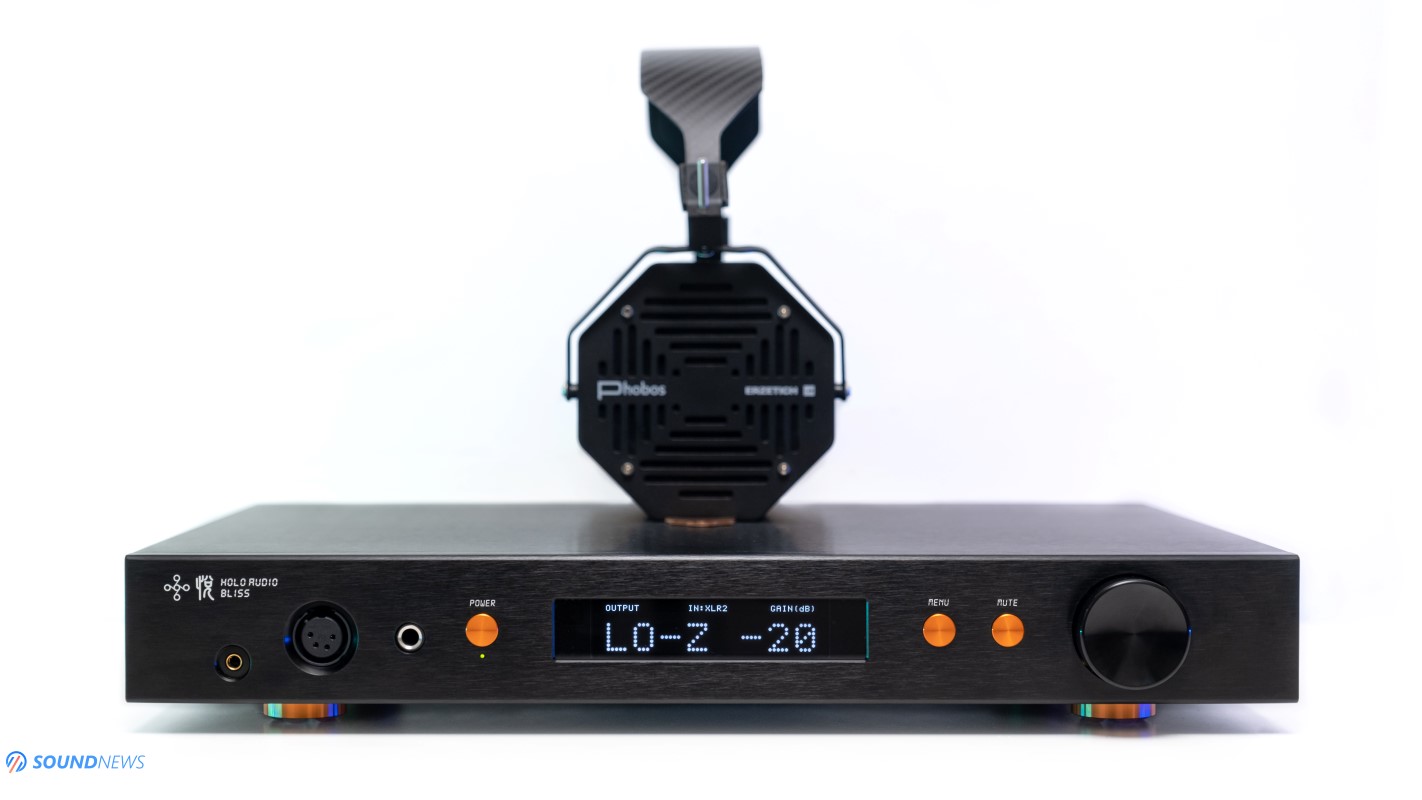
My Conclusions
I won’t be adding a dozen comparisons to this article for a couple of reasons, but the most important one is that we will be organizing a high-end solid-state headphone amp sparring contest in a couple of months. A few amps will be showing up soon, and a single one needs to come back from service, so expect a complete comparison featuring me and a few headphone junkies. I’ll make sure to include the Bliss in that showdown.
If I ignore the initial experience I had with the Hifiman Susvara and its chill-out sound before it warms up, then I must admit there’s hardly anything to nitpick about the Bliss. Now, I know a few headphiles out there might crave sharper leading edges, a touch more sparkle in the upper treble, or even a smidge more power. But hey, apart from those minor quirks, I’ve got nothing but praise for the Bliss!
Starting with its build quality, looks, fancy internal wiring, excellent component selection, and finishing with its sound performance, this is how a high-end headphone amplifier should perform in the true meaning of the word. Part of that depth, layering, and note separation I’m getting from a much pricier Trafomatic Primavera was moved into Holo’s Bliss, and I’m not sure how the standard Bliss performs, but this one will perform magic tricks on you, especially when playing live music. Having two pairs of XLR inputs also feels like a blessing, especially when you like playing and comparing D/A converters and its preamp section was blowing in the direction of high-end active preamps.
The standard Level 1 Bliss comes in at $2.998 in the good ol’ USA and €3.390 across the pond in Europe. But hold on to your headphones, because the top-end KTE (Kitsune Tuned Edition) will set you back $3.398 in the USA or €3.890 in Europe. Now, let me spill the beans, I genuinely believe you can’t do better at this price with current tech wizardry. Holo Audio has definitely earned our prestigious Gold Award, and they’re waving it high and proud from this moment onward!

Now, if you’re lucky enough to get your hands on one of these bad boys, drop me a line in the comment section below. I want to know how it’s treating your headphones – like a five-star chef or a rock ‘n’ roll maestro? That’s all for now, music lovers. Sandu’s signing off!
PROS:
- A beautifully crafted device
- Rock-solid build quality
- Provides all possible inputs and outputs, including a simple-to-use UI and remote control
- A solid preamp stage that will challenge dedicated preamps
- Clean and highly resolving sounding
- Sounds open and wide, deep & layered
- Effortless & easygoing
- Covers the frequency response in full, without putting the spotlight on a particular frequency range
- Plenty of power for the most demanding loads
- Great dynamics, pace, rhythm, and timing
- Zero distortion at maximum gain with ultra-sensitive IEMs, it’s completely noiseless
- Highly technical, yet real sounding
- Worth its asking price
CONS:
- Not the most powerful headphone amplifier
- Gets mildly hot after about an hour of use
ASSOCIATED EQUIPMENT:
- DACs: Chord Electronics DAVE, Rockna Wavedream Signature XLR, Gold Note DS-10 PLUS & PSU-10 EVO
- Wireless Streamer & Music Server: Rockna Wavedream NET 4TB, EverSolo DMP-A6
- DDCs: Singxer SU-6, Matrix X-SPDIF 3
- Headphone Amps: Holo Audio Bliss KTE, Trafomatic Primavera, Enleum AMP-23R, Ferrum OOR & HYPSOS, Burson Soloist 3X GT, Flux Lab Acoustics Volot
- IEMs: Westone Mach 50, Meze Rai Penta, FiiO FH9 & FX15, 7Hz Timeless AE, Kinera Skuld & others
- Full-sized headphones: Meze Elite & 109 PRO, Erzetich Charybdis & Phobos V.2021, HiFiMan Susvara & HE1000SE, Audeze LCD-5 & LCD-4, Sennheiser HD800S, Kennerton Rognir (planar) & Vali, Apos Caspian, Sendy Peacock & Apollo, HarmonicDyne Elite & Poseidon, others
- Preamps: Chord Electronics Ultima 3 Pre
- Power Amps: Chord Electronics Ultima 5 Power, Burson Timekeeper 3X GT (x2)
- Loudspeakers: KEF Reference 3, Musician Knight 1, Sound of Eden Crescendo UNO
- DAC/Amps: Shanling H7, FiiO Q7, Topping G5
- DAPs: FiiO M15S, M17, Shanling M7, Hiby R6 PRO II
- Interconnects: Crystal Cable Reference2 Diamond (x3), QED Reference (x2), Topping TCX1 (x2)
- USB Cables: Supra USB Excalibur (x2), Chord C-USB, Matrix Hi-Fi USB
- HDMI Cables: Audioquest Diamond DBS, Supra 8K HDMI
- Speaker cables: Kimber PR8, Audioquest Type4
- Power Cables: Crystal Cable Reference2 Diamond (x3), Isotek EVO3 Premier (x2), iFi Audio SupaNova (x2)
- Balanced Isolation Power Conditioners: PLiXiR Elite BAC1500 (stereo setup), KECES IQRP-1500 and P14 (headphone setup)
